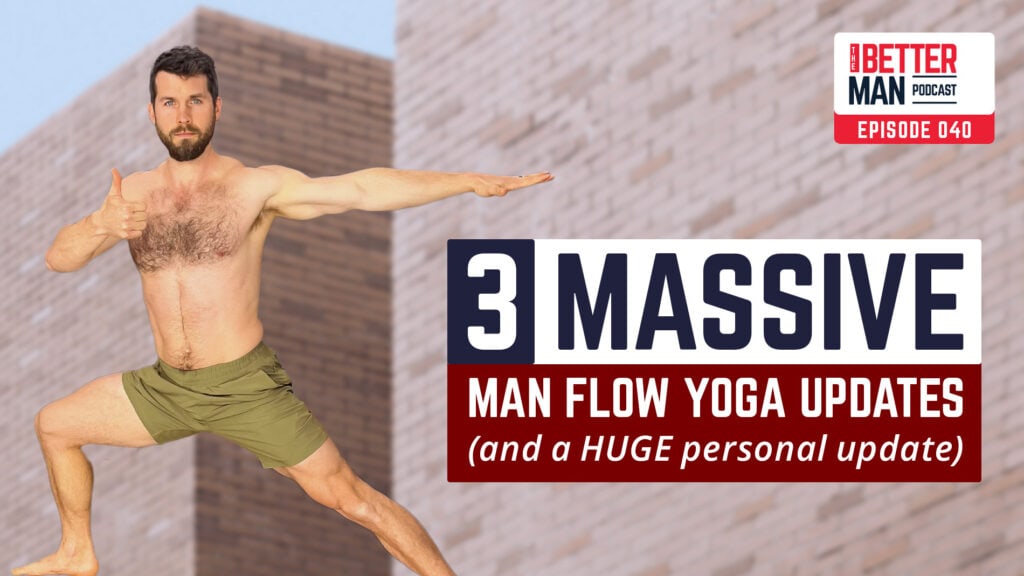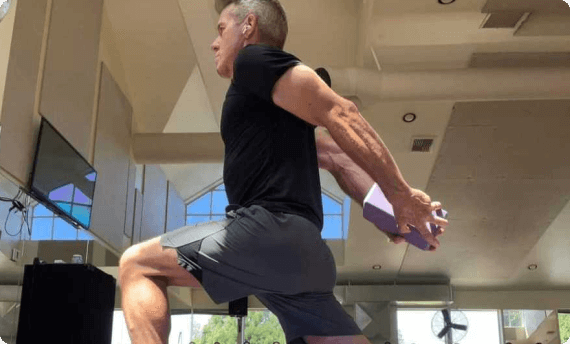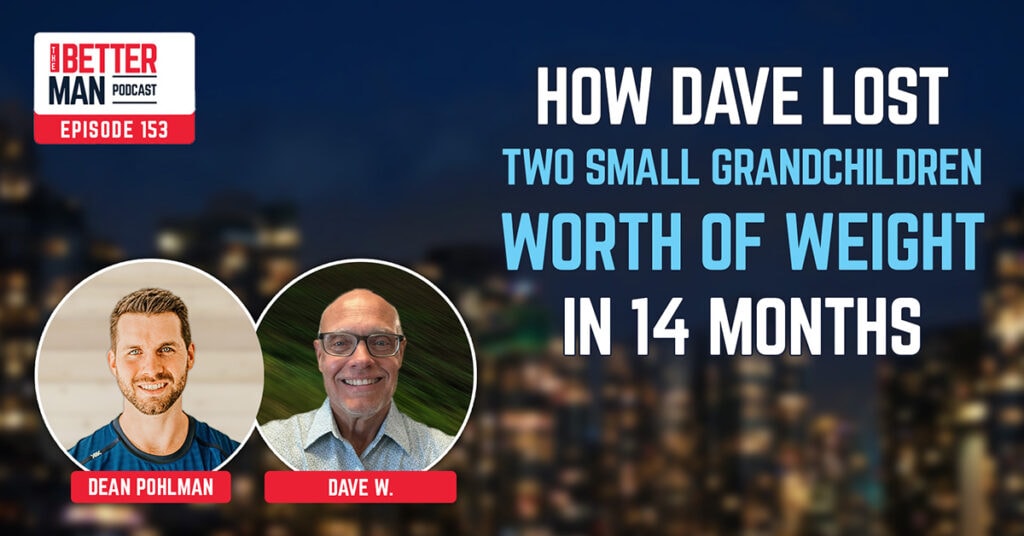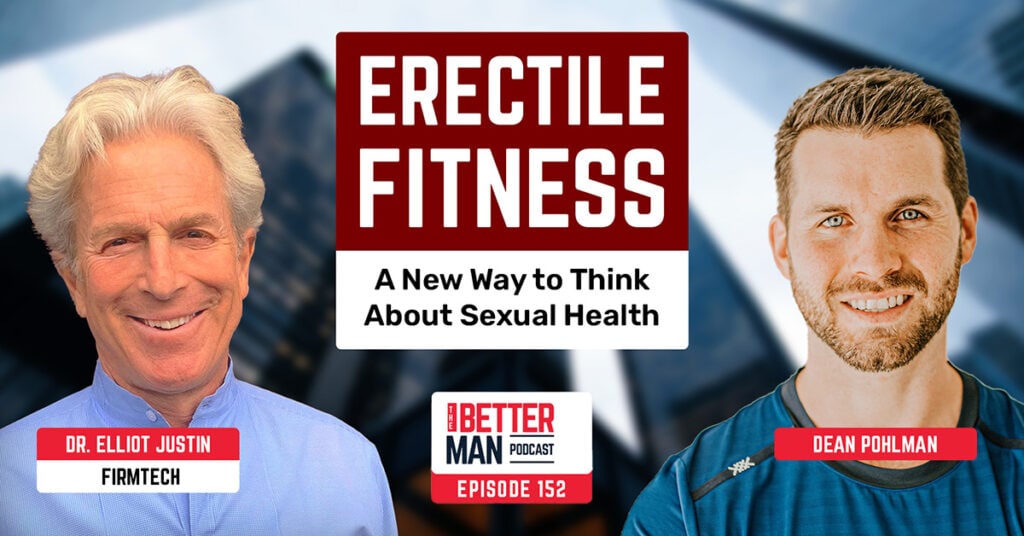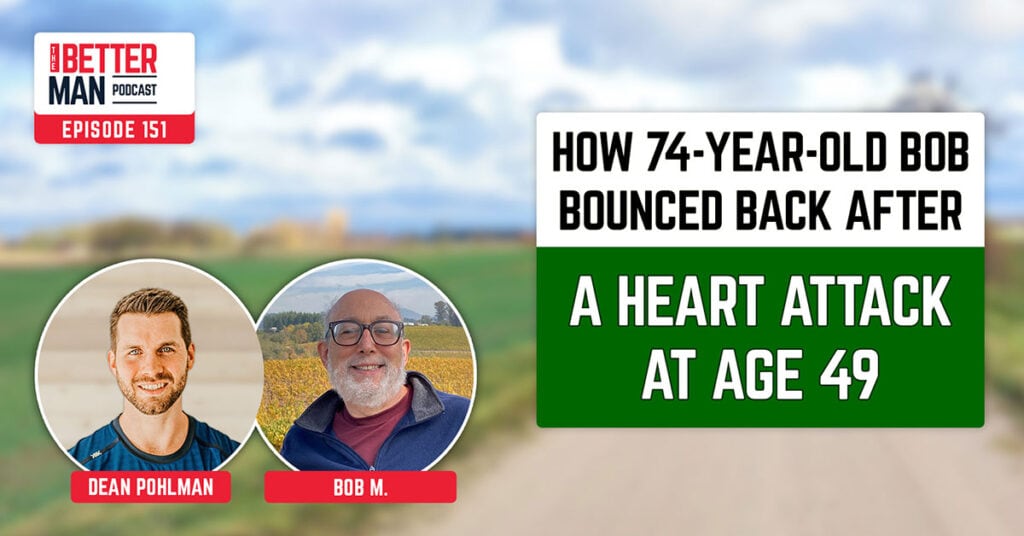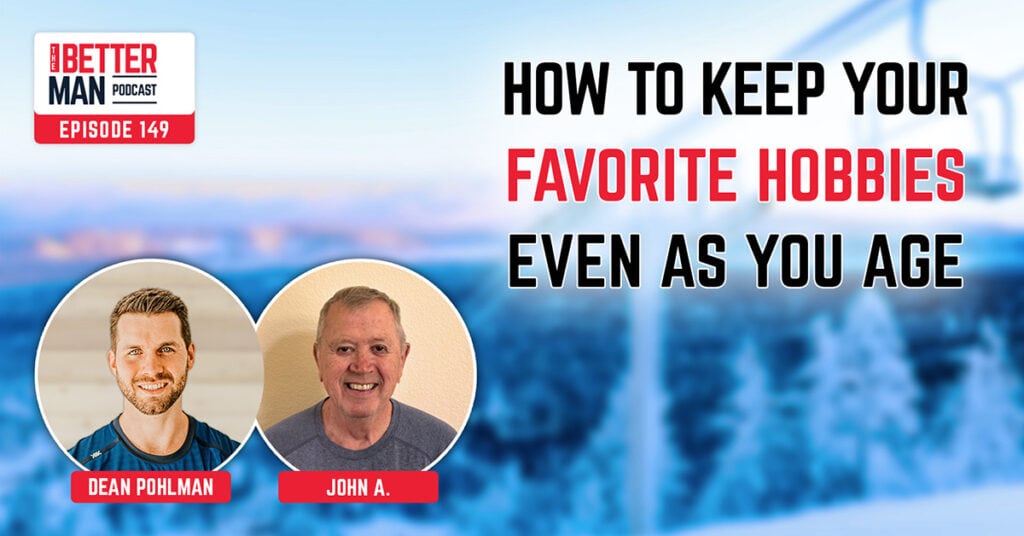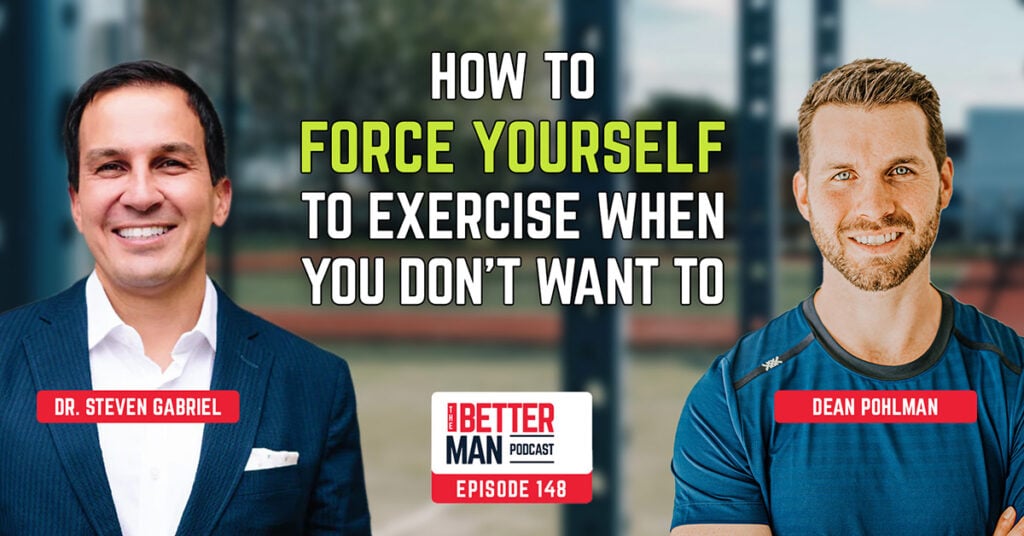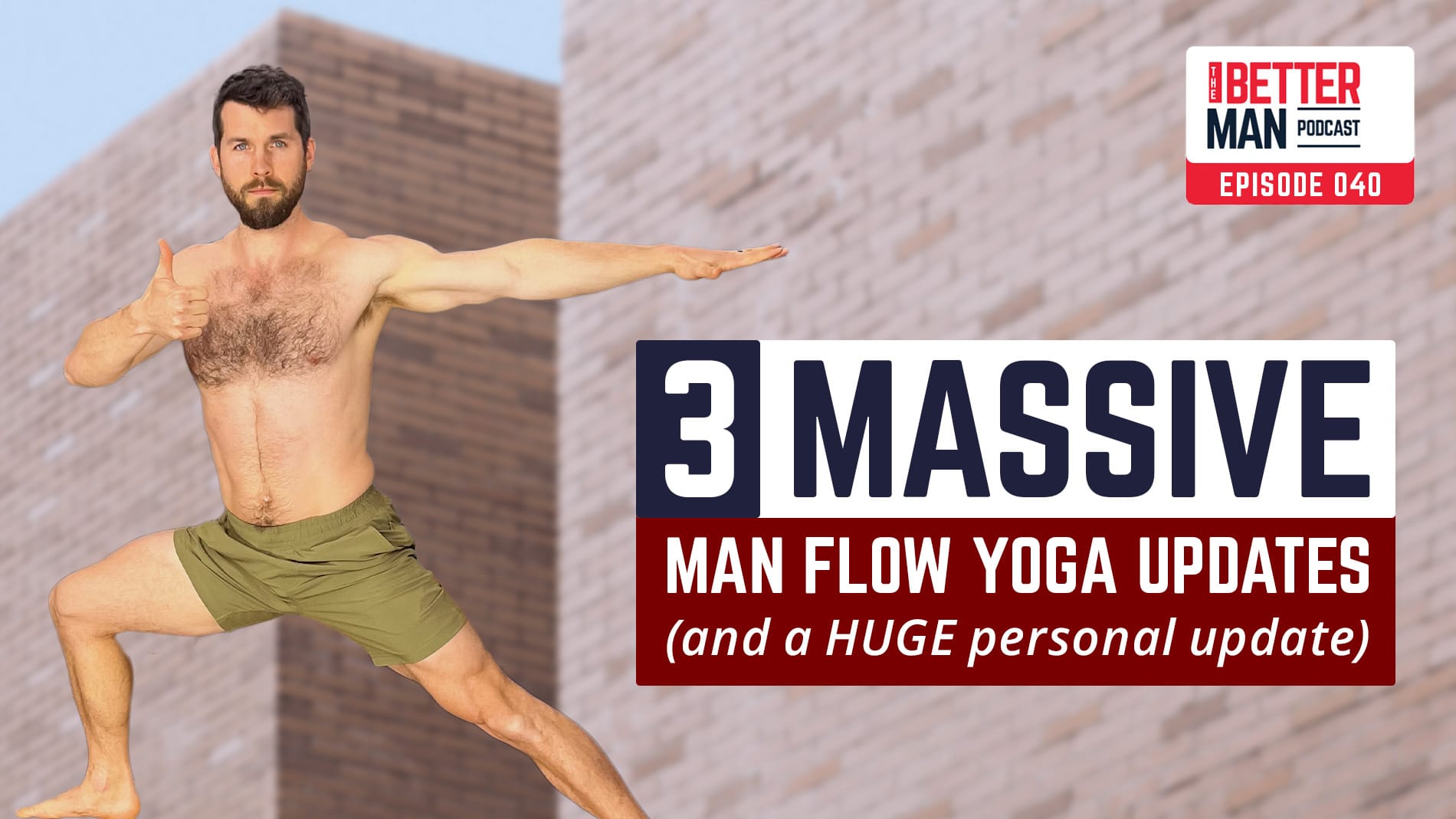Hey, guys, it’s Dean. Welcome to the Better Man podcast. Today is a solo podcast episode, and I’m going to talk about what you should do when you’re gold. Start to get off track. So we are couple of weeks into the new year. For me, I kind of got a late start. So I started on my new goals on January, I think it was January six through January 5th. I don’t know. It wasn’t the it wasn’t on January four. So I’m a couple of weeks in. I’m sure that there’s a lot of you who are in a similar situation.
So in this episode, I am going to talk about the one mindset that you must avoid in order to be successful with your goals. Most going to talk about why you can’t plan for things to go your way and how to avoid that animosity and talk about how you should go about increasing the intensity of your habits or scaling them back. Because both of those things are important. All right. So here we go. And I’m going to also talk about this within the context of something that I started doing this year, which is a cold plunge. So basically, I have a little bathtub in my backyard that keeps water at a certain temperature and it’s cold, it’s uncomfortable, but there are numerous benefits that go with it. And so I’m starting to do that for 20, 23 and inevitably I got into kind of my second week of doing it and complications arose. So it turns out that I didn’t actually hook it up correctly. I had to die for the unit because it was only sending water into the freezer. It wasn’t circulating it properly. And that took me a good hour or so to do so, you know, I could have in that situation, I could have given up and said, Oh, it’s not I don’t have time to do this. I’m just going to, I’m just going to do it later. And then I probably would have gotten off track. I wouldn’t have been able to keep up the habit, and I might have lost the motivation that I had to keep doing it. So this is one thing that you that you have to avoid.
This is kind of part two of what I was talking about, which is you can’t plan for things to always go your way. You know, inevitably life is going to get in the way. Somehow something is going to come up that you did not anticipate. And it’s usually going to take your time and it’s going to take your energy to address. So those are two things that we have limited amounts of. So if we plan for things to always go our way and we that’s kind of the budget that we’re setting for our time and our energy and something goes wrong and we don’t have any extra time or we don’t have any any any extra energy to fix that situation, then that habit or whatever we’re trying to do that’s new is probably going to drop off. So that’s something that’s that’s really important to recognize. And also, I’ve said this before, but I think this is one big reason why this is one big consideration that people don’t take into account when they think about their goals or think new things that they want to do. Is that they already have a life that’s probably filled with all sorts of other habits, responsibilities, things that take up your time, think things that take up your energy. And when you try to do a new habit, you are doing this on top of all the existing things that you already have going on. And so in order to make sure that this is something important and make sure that this is something that’s going to be worth your extra time and energy, it is really important to figure out, OK, why is this significant to me? Why does this have a deep personal meaning to me? And if you missed I actually talked about that in the last solo podcast episode that I did.
So check that out if you missed it.
But there that’s the point. The big point here is that things are not always going to go your way. Life is going to come up, complications are going to arise. And you just have to anticipate that that’s part of it. The second thing that I wanted to talk about is the mindset that you must avoid in order to be successful. And this is the all or nothing mindset. And this is this is something that there are certain types there. There is a certain type of person that is just hardwired to think this way, that they think that, OK, if I can’t do it according to plan then I shouldn’t do it at all. And this is a really dangerous mindset because it means that we might be doing a lot of really good work, we might be doing a lot of you, we might be doing something new, doing it consistently and getting real results from it, building a good foundation. But then we have a week where things just get off track, maybe family comes in visits, maybe we go on vacation, whatever it is, but we get off track.
We don’t do something for a couple of days and then we think, Oh, you know what? I’m just I’m going to stop doing it. I’m not doing it properly. I’m not doing it enough. So and this is going to happen no matter what. So it’s it’s up to you to recognize when this is happening and to tell yourself, hey, you know, I missed a couple of days, but that’s OK. I’ll just jump back into it because we don’t want to give it up entirely. So if this is you, if you are this type of person, then you just need to be aware that it’s happening. You need to be aware of this mindset that you have a tendency towards to avoid doing something if you’re not doing it perfectly. You know, I kind of hesitate to give you a specific consistency that you should be aiming for. I I do a lot of reading on, on, on books, on habit formation. And the one that I’m rereading right now is called Tiny Habits by BJ Fogg and something that I like about his. And I was actually having this conversation with my wife a couple of nights ago is you just do the smallest version of the habit to keep that habit alive. So, you know, I might not go, I might not read. So this is another habit of mine, but I read every night before I go to sleep. So I might not read for 30 minutes every night before I go to bed, but I at least turn my light on, pick up a book from my nightstand, open it and read a paragraph or two, and then I put it down. Is that going to get me a tremendous amount of benefit?
Now, that specific one to two paragraphs that I read is not going to change my life, but what it is doing is it’s preserving the habit, it’s preserving the consistency so that when I do do those longer reading sessions or when I do, you know, have the energy to read more and get more out of it, then I do it. But if I didn’t have that habit that that consistent automatic behavior of turning my light on, grabbing my nights, grabbing my book from the nightstand and reading a little bit, then I probably wouldn’t I would be much less much less likely to actually read a book at all. So my wife was asking me, You don’t even read anything. Why didn’t you do it? I’m like, well, I’m just I’m keeping the habit alive. Ironically, I was reading a book about that as I was doing it. So I do like to read habit books on a regular basis. Because so much of my self improvement and what I try to do is based on improving habits. So I like to read those books. I like to keep them in the back of my mind. As frequently as possible.
So anyways, and that leads me in to my third point here, which is when you should scale back your habit and when you should scale it up. So I’ll talk about this within the context of my new habit of going in my cold lunch. So I started this with a goal of just doing it for one minute and doing it at a higher temperature than I wanted to do it. So the cold plunge goes down to 39 degrees if you’re familiar with cold water, anything below 70 is going to feel pretty cold. Yeah, anything below 70 is going to feel pretty cold. So I knew that I wanted to make this sustainable, so I didn’t want to start at 39. And I also didn’t want to start with a goal like 5 minutes per day aside from the, the difficulty and the motivation required to do that. I also knew that just going straight into that, without any consistent work of of cold water immersion leading up to that, I might end up getting sick, I might end up, you know, doing too much. So I wanted to do a smaller version of that habit. So I said, OK, I’m going to do it at 50. I think I said a 50 or 52 degrees, which is still really cold, by the way, and I’m going to do a minimum of one minute. So that was my start. That was what I started at. And and then after a couple of days, I’m like, OK, hey, this is manageable. So I’m going to increase this. I’m going to scale it up. So after that, I started holding, I started doing instead of ten breaths, I worked my way up to doing 15 breaths. And then while I was in the tub, I was like, I can do 20 breaths. So I do 20 breaths. And by the way, the breathing really slows down when you’re in the cold plunge. So this ends up being like two to 3 minutes. I also like to dunk my head underwater and hold my breath at the end. So I started with, I think, 20 seconds. I went up to 30 seconds and then I started doing 40 seconds as well.
So but I know that if I’m not feeling great that day that I can always scale back and just do the minimum of ten breaths and 20 or 30 seconds underwater at the end. So if I’m not feeling it, I scale back the habit and if I am feeling, Hey, this is cool, this is good, then I’ll scale up the habit. And the big point here is that I’m just keeping it consistent. I’m not I’m not necessarily doing it to the max every day. I’m not setting this this high standard that I have to do every day. I’m just preserving the consistency of that habit so that it’s something that I do for months and years to come instead of something that I do for a month. And then just it just kind of peters out on its own. So a big part of this is also recognizing that I can’t rely on willpower or motivation alone. There has to be some sort of reminder in place or a prompt for me to do that behavior. So it has to come at a specific time. Usually for me, it’s when I’m feeling a little bit more active, maybe I’ll go for a walk and then I’ll do my cold punch after that. Or maybe it’s after I do a workout. I take some time to stretch and kind of wind down, and then I’ll go and do it but the point is, for me, the habit is prompted or triggered by a by and by active by by a movement focused activity of some sort. And that reminds me to do it when I do realize that I am kind of forcing myself to do it or not. So forcing myself, but I’m just kind of doing it out of structure.
That’s when I realize, OK, this is kind of dangerous because right here I’m relying on motivation and willpower to make this happen. I’m not doing this as part of an existing habit. I’m not tying this into behavior. And that’s something that you want to be on the lookout for when you’re only doing something based, when you’re only doing your new habit based on motivation, willpower, or a mental reminder to yourself that isn’t prompted by another behavior or something in your environment. Maybe you see something like if it’s a yoga habit or if you’re doing your Man Flow Yoga on a regular basis, maybe you put your yoga mat out in front of wherever you do yoga and that reminds you to do your yoga. You walk by your yoga mat, oh, there’s my yoga mat. I need to do my yoga today. Here it is. So if you don’t have some of those prompts in place and you’re only relying on mental reminders or on just willpower or motivation, that’s something to be on the lookout for, because if you’re only relying on that, it’s going to be difficult to make that behavior into an automatic habit, something that is done automatically you also just a couple other tips here, and then I’m going to sign off.
But one other thing, really want to make sure that you’re planning at this out in advance. You should be able to know exactly when this fits into your schedule. The time is not so important. It’s not so much saying at 9:00 every day I’m going to do Man Flow Yoga, I’m going to go on a walk or I’m going to go do this or that. The important thing is that you’re fitting it into the structure of your existing behaviors. So let’s take activity A, for example, Activity A is something that you already do on a daily basis. And just for the sake of relatability, let’s say eat breakfast or brush your teeth. So these are things that we do every day already. So after I do activity A, I will and this is where you insert your new behavior OK? So it’s not so much about I’m going to do this at 8:00. It’s more so figuring out a an existing behavior, which we’ll call an anchor habit or an anchor behavior and tying it into that. And that is your prompt to do your new behavior, and that’s planning in advance. So and you want to make sure that the theme of what you’re doing ties into the anchor behavior. You also want to make sure that it’s in ideally in the same location and that it’s at the same time that it has the same frequency of the new habit that you’re trying to do. So there are a lot of things to consider here, but those are the big ones so make sure that you’re planning advance, you’re doing it realistically, and you’re fitting it in with existing behaviors that are dependable.
So those are my tips there. And then lastly, I wanted to address this, this myth about habit formation that that it takes X amount of days to form a habit or it takes 221 days to form a habit. And this is actually just B.S. This is there’s no science behind this whatsoever. It’s not true. It could take 20 days, it could take two days, it could take 365 days, it could take 8000 days. There’s no specifics that day. What does depend what does factor into this? What it’s about the intensity of the behavior, how well does it solve a specific need? So if you do something and it really solves the issue that you’re trying to do and it wires it into your brain and the you get a you know, you get a prompt reward from it, you get a nice surge of dopamine after you do the behavior, then it’s likely it could form in one day. You know, you could do something once and your brain is like, oh, this is really good. This solve the need. It was easy to do. It fits in with my schedule. Great. But for most of it is also has to do with frequency. If you do something ten times a day versus one time of day, then it’s less likely. It’s more likely if you’re doing it more frequently to become a habit more quickly.
So it’s how well does that behavior solve a need? Does it produce a noticeable result? And and is it automatic? Is it something that you automatically think of in response to a prompt? Is that something that you automatically do in response to a desire or a physical need? The more automatic it is, the more likely it is to be a habit if you just do something repeatedly. But it’s not. There’s no there’s no psychological prompt or there’s no environmental prop that reminds you to do something, then it’s not a habit. It’s just something that you do repeatedly. And we want to work toward making something that desired behavior. Automatic should be something that you do without thinking. That is the goal, something that you feel inclined toward doing rather than something that you put on a calendar and you say, Oh, it’s time to do this. I wasn’t even thinking about it. In that case, it’s a good idea to go back to the drawing board and figure out, OK, how do we make this behavior more automatic? So I would keep all of that in mind if you’re looking for more resources on this. Tiny Habits by B.J, Fogg is a great book, as is Atomic Habits by James Clear. I know that James Clear also has a thriving blog. I think he has a ton of videos on YouTube as well. So check that out. If you’re interested in setting better behavior for yourself. And and that’s what I’ve got for you today.
So guys, if you’ve been listening, if you enjoy this, I encourage you to leave a review for the Batman podcast on iTunes on Apple Podcasts or on Spotify. So please do that. Say something nice about me if you can hit the five star button, if that’s cool with you. And yeah, so we’ll be doing more. So a podcast, we’ll be doing more interviews as the the weeks in the months go on. And if you’re not already doing Man Flow Yoga, you can start at any time with a free seven day trial at Man Flow Yoga dot com slash join if you’re not ready to get out your credit card yet. I do have a free seven day beginner’s yoga challenge at ManFlowYoga.com7dc
Lastly I want to give a big shout out to a an amazing brand that I’ve been partnering with for 2022 four roan this is men’s apparel they have a ton of new styles on their website check them out romcoms. They also have a great closeout section clearance so get some good deals on gear. I hit it up a couple of days ago and got some of my favorite pants. So yeah. Ronco and you can use the CO 20 man flow yoga for 20% savings or just click the link in the description in the podcast here.
All right guys, that’s it. I hope you’re having a great week. Hope your goals are going well. Make sure to remember what I told you here in the podcast. See you guys in the next episode. Bye bye.
[END]
